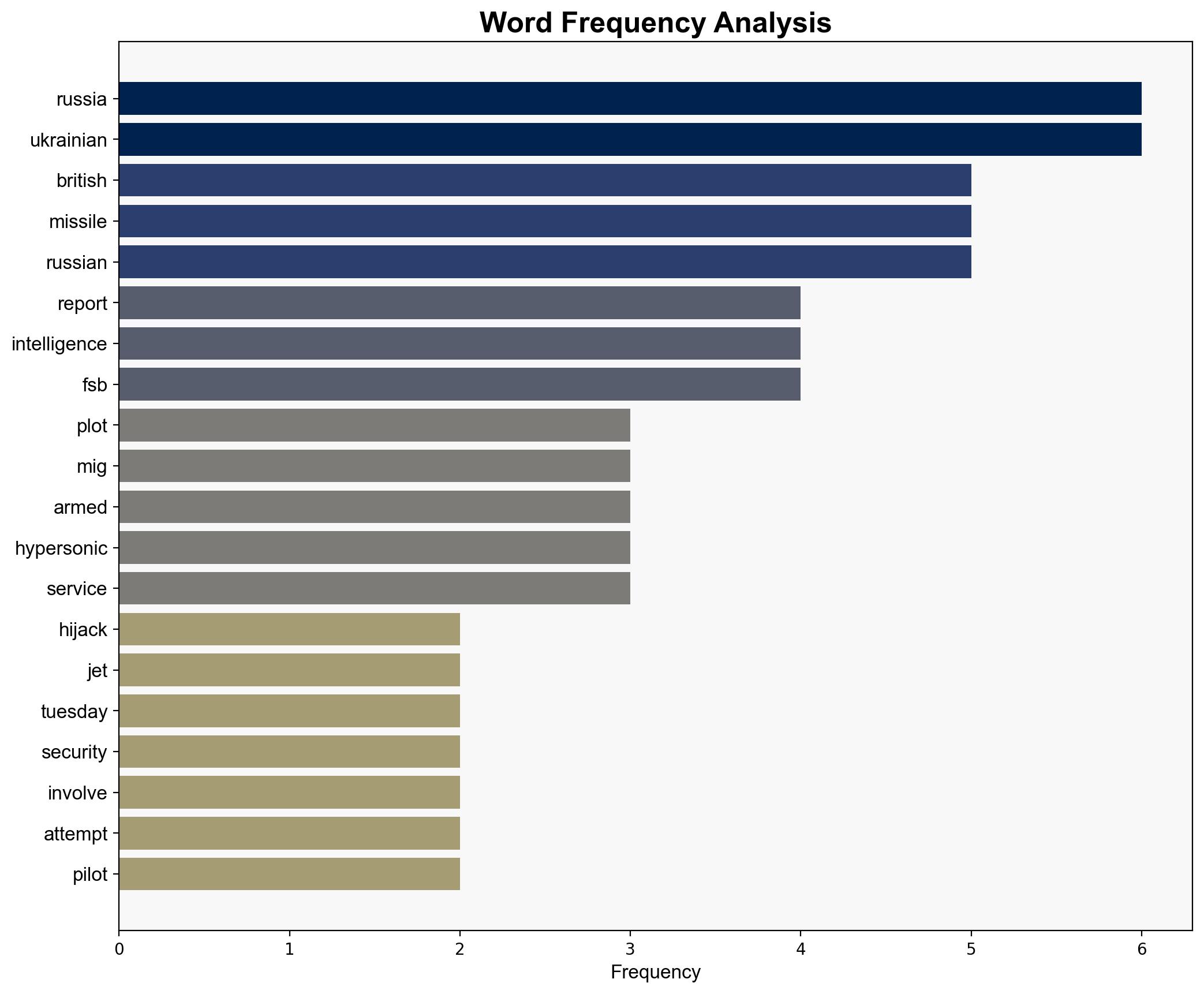Russia foils Ukrainian-British plot to hijack MiG-31 jet armed with hypersonic missile Report – Globalsecurity.org
Published on: 2025-11-12
AI-powered OSINT brief from verified open sources. Automated NLP signal extraction with human verification. See our Methodology and Why WorldWideWatchers.
Intelligence Report: Russia foils Ukrainian-British plot to hijack MiG-31 jet armed with hypersonic missile Report – Globalsecurity.org
1. BLUF (Bottom Line Up Front)
With a moderate confidence level, the most supported hypothesis is that the reported plot is a strategic narrative by Russia to justify increased security measures and to delegitimize Western involvement in Ukraine. Recommended actions include monitoring for further Russian narratives that might indicate pretexts for escalatory actions and enhancing counterintelligence efforts to verify the authenticity of such claims.
2. Competing Hypotheses
Hypothesis 1: The plot was a genuine attempt by Ukrainian and British intelligence to hijack a Russian MiG-31 jet to gain strategic advantage and create an international incident.
Hypothesis 2: The plot is a fabricated narrative by Russian intelligence to justify increased military readiness and to discredit Western involvement in Ukraine.
Hypothesis 2 is more likely due to the lack of corroborating evidence from independent sources and the strategic utility for Russia to frame Western nations as aggressors, which aligns with past Russian information operations.
3. Key Assumptions and Red Flags
Assumptions: The report assumes the authenticity of the FSB’s claims without independent verification. It also assumes that the pilot was genuinely approached by foreign agents.
Red Flags: The timing of the report coincides with increased tensions and could serve as a pretext for Russian escalatory actions. The lack of independent verification and the potential for staged communications are significant red flags.
4. Implications and Strategic Risks
The narrative, if false, could be used by Russia to justify aggressive countermeasures against Ukraine and its allies, potentially escalating military tensions. If true, it indicates a high level of desperation and risk-taking by Ukraine and its allies, which could lead to severe diplomatic fallout and increased military confrontation.
5. Recommendations and Outlook
- Enhance intelligence collection efforts to verify the authenticity of the plot and monitor for similar narratives.
- Engage in diplomatic channels to de-escalate tensions and seek clarification on the incident.
- Best-case scenario: The narrative is discredited, leading to a reduction in tensions.
- Worst-case scenario: Russia uses the incident as a pretext for military escalation.
- Most-likely scenario: The narrative remains unverified, serving as a propaganda tool for Russia.
6. Key Individuals and Entities
The report mentions the Russian Federal Security Service (FSB) and unnamed Ukrainian and British intelligence agents. No specific individuals are named.
7. Thematic Tags
National Security Threats
Structured Analytic Techniques Applied
- Cognitive Bias Stress Test: Expose and correct potential biases in assessments through red-teaming and structured challenge.
- Bayesian Scenario Modeling: Use probabilistic forecasting for conflict trajectories or escalation likelihood.
- Network Influence Mapping: Map relationships between state and non-state actors for impact estimation.
Explore more:
National Security Threats Briefs ·
Daily Summary ·
Methodology





